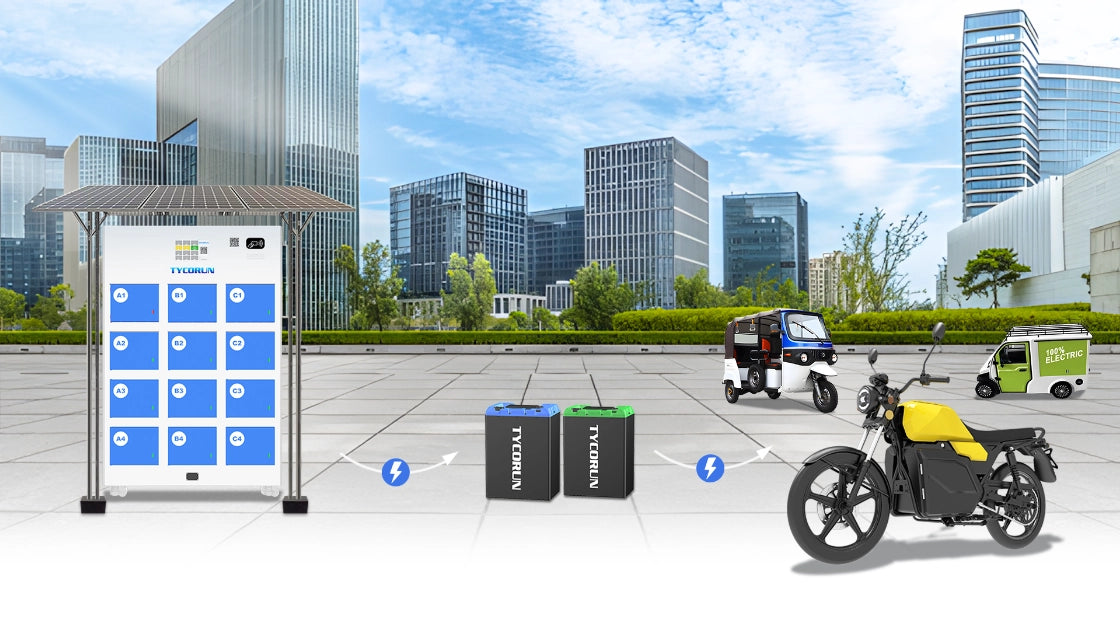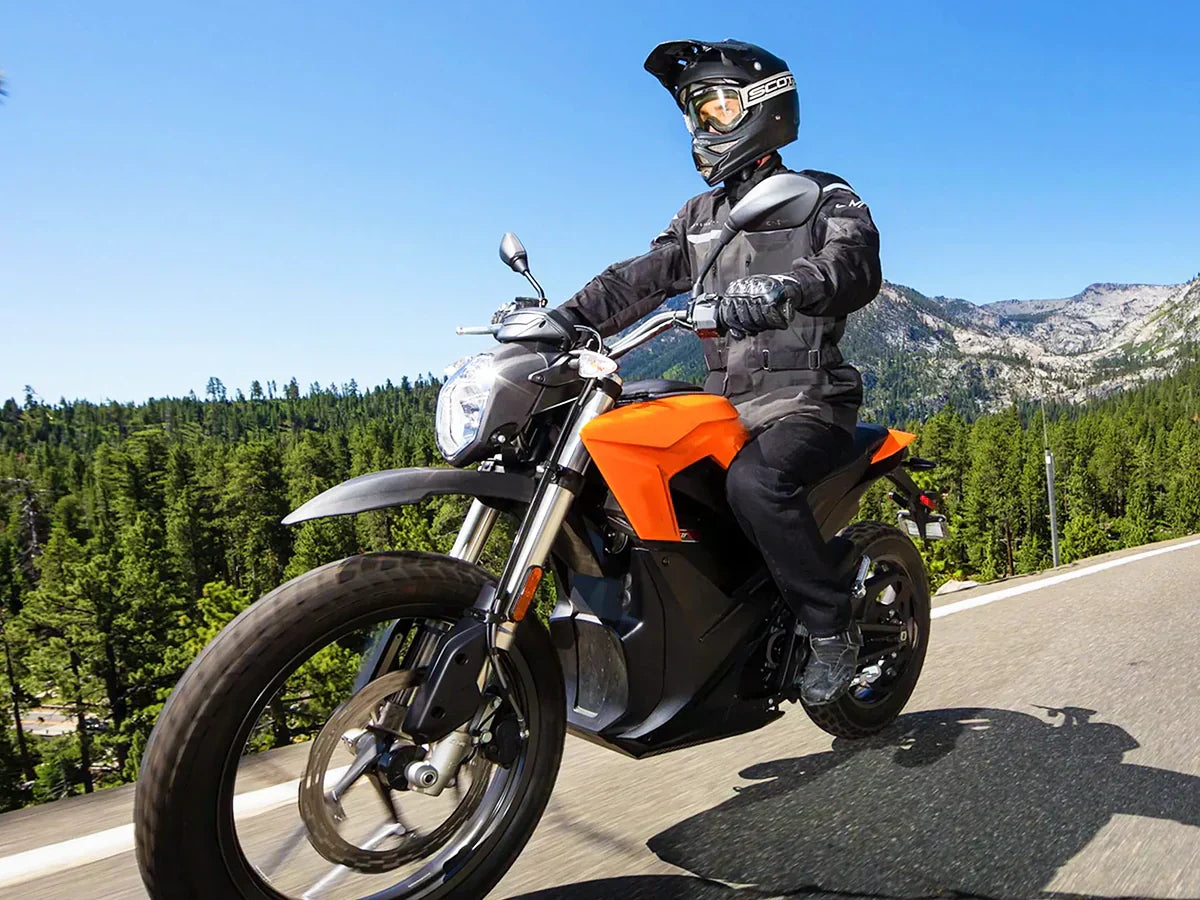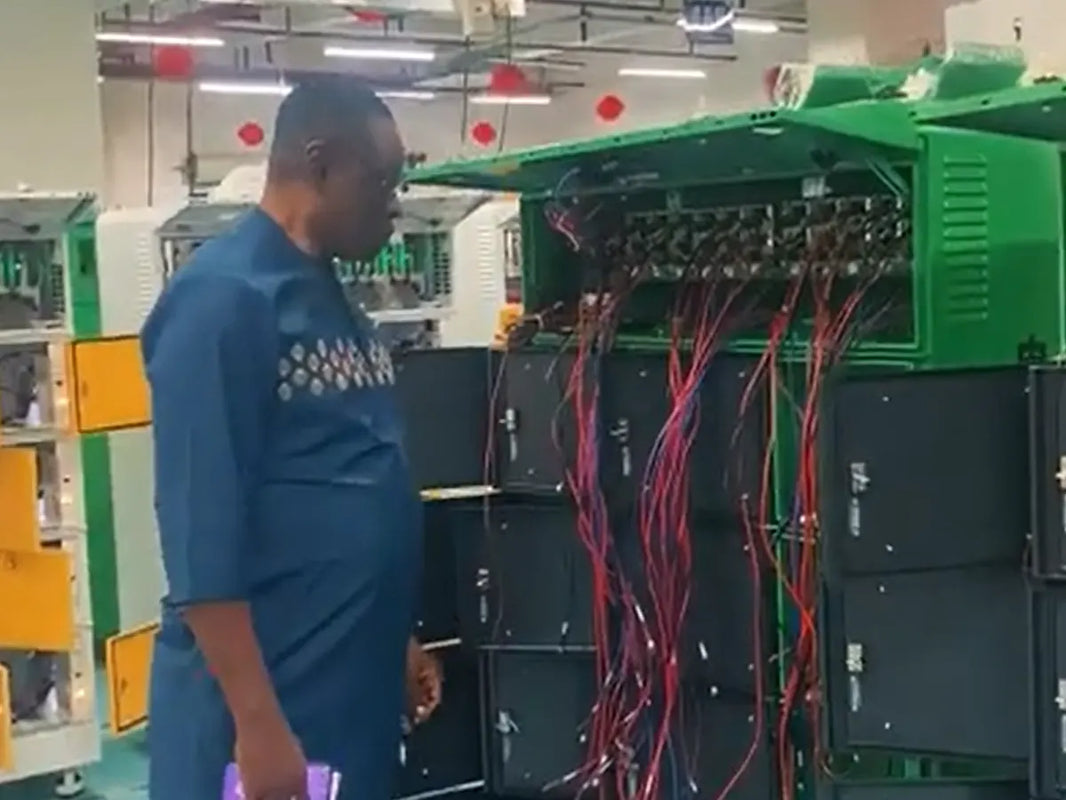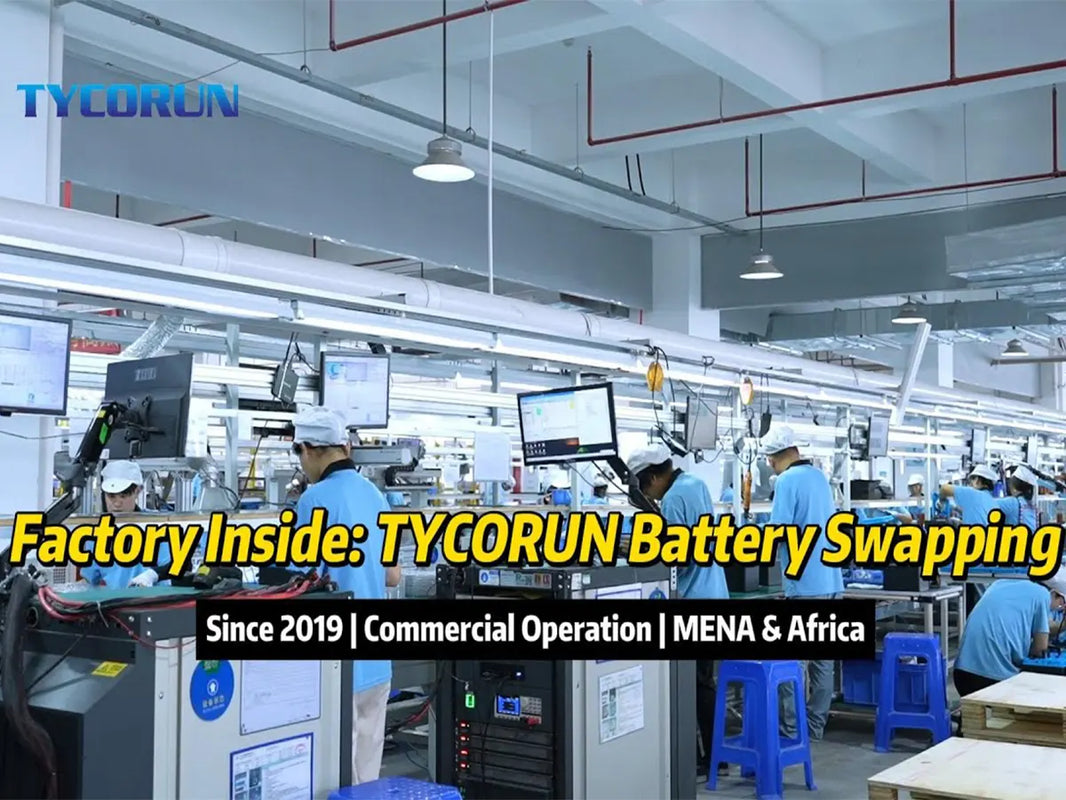
Main content:
- Components of an E-motorbike
- How Do Electric Motorcycles Work?
- How Do You Charge an Electric Motorcycle?
- What Are The Pros and Cons of Electric Motorcycles?
- 5 Things You Should Know Before Buying an Electric Motorcycle
- Top Benefits of Riding an Electric Motorcycle
- Are electric motorcycles safe?
- The Future Outlook of Electric Motorcycles
- Final Thoughts
In simple terms, an electric motorcycle is a two-wheeled vehicle powered entirely by electricity. Unlike electric bicycles, which still have pedals for manual riding, electric motorcycles run purely on electric power.
Just like traditional motorbikes with fuel engines, they use a motor that gets its energy from a battery pack. The main difference is the power source — instead of gasoline, electric motorcycles rely on rechargeable batteries or fuel cells, making them a cleaner and more efficient choice. You’ll learn more about this process in this article how do electric motorcycles work?

Components of an E-motorbike
Just like conventional motorcycles, an electric motorcycle is built from several key components that work together to ensure smooth and reliable performance. Each part plays a crucial role in turning stored electrical energy into motion.
Below are the three most important components that define how an electric motorcycle operates and what makes it different from its fuel-powered counterpart.
1. The Rechargeable Battery
At the heart of every electric motorcycle lies the rechargeable battery, the primary source of power for the entire vehicle. Without it, the electric motorbike wouldn’t be able to function at all.
Instead of a bulky combustion engine, this space is occupied by a battery pack, typically made up of several cells enclosed in a durable plastic casing. A standard 12V battery delivers around 12.6 volts when fully charged, enough to energize the motor efficiently.
Electric motorcycles generally use a single battery pack composed of multiple interconnected cells. These batteries can last anywhere from 3 to 10 years, depending on their type, quality, and usage conditions.
Some of the most common battery chemistries used in electric motorcycle include:
- Lithium
- Lithium-ion
- Lithium iron phosphate (LiFePO4)
- Lead-acid
- Nickel-metal hydride (NiMH)
Each type of electric motorcycle battery varies in weight, energy capacity, cost, and lifespan, but lithium-based options are currently the most popular due to their high energy density and long life cycle.
2. The Electric Motor
The electric motor is responsible for converting electrical energy from the battery into mechanical motion, which drives the motorcycle forward.
Compared to gas engines, electric motors are smaller, lighter, and more efficient. They’re often mounted near the rear wheel and connected through a chain or belt drive system.
Electric motors operate on a simple design — they don’t require cylinders, pistons, or spark plugs. This simplicity translates into lower maintenance needs and smoother operation.
Unlike internal combustion engines that take time to build up torque, electric motors deliver instant power and acceleration the moment you twist the throttle. They also don’t require engine oil for lubrication, making them a cleaner and more eco-friendly option.
3. The Braking System
While the battery and motor provide the motion, the braking system ensures safety and control. It allows the rider to slow down or stop whenever necessary, making it one of the most critical components of an electric motorcycle.
In most electric motorcycles, the braking setup differs slightly from traditional models. Both brakes are typically located on the handlebars—one on each side. Since there’s no clutch lever, the rear brake is controlled from the left handlebar, while the front brake is operated from the right handlebar.
This design not only simplifies operation but also enhances rider comfort and safety, especially in stop-and-go city traffic.
In short, the battery, motor, and braking system are the three essential components that keep an electric motorcycle running efficiently and safely. Together, they define what makes this modern form of two-wheeled transport powerful, practical, and environmentally sustainable.
How Do Electric Motorcycles Work?

Electric motorcycles rely on two main components: the battery and the motor. The battery functions as the energy source, much like a fuel tank in a traditional motorcycle, but instead of storing fuel, it holds electrical energy measured in kilowatt-hours (kWh). The higher the capacity, the more distance the motorcycle can travel before needing a recharge. However, larger batteries also add extra weight, increase cost, and require longer charging times.
The motor is responsible for turning that stored energy into movement. Depending on the motorcycle’s design, it might be placed directly inside the rear wheel (common in smaller or commuter models) or connected to the rear wheel through a chain or belt system. Cooling systems also differ — some motors rely on air cooling for simplicity and lower weight, while others use liquid cooling for better performance and heat management.
When the rider twists the throttle, a controller acts as the communication bridge between the battery and motor. It determines how much electric current flows to the motor based on throttle input. The more current sent, the faster the motor spins, delivering instant acceleration and smooth performance.
Electric motors are typically rated with two types of power output: maximum power (the peak output for short bursts) and continuous power (the amount the motor can maintain steadily for a longer period, usually 30 minutes). Continuous power often determines the motorcycle’s licensing category in many countries.
How Do You Charge an Electric Motorcycle?
Charging an electric motorcycle is generally straightforward. Most commuter or city models can be connected to a standard household outlet, though a full charge may take several hours depending on the battery capacity. For riders without access to home charging, many models feature removable batteries that can be conveniently charged indoors or at work.
Mid-range and higher-end electric motorcycles often support Level 2 AC charging, which utilizes public or home-installed charging stations. This method provides faster charging compared to a standard outlet, though the actual speed still depends on the motorcycle’s onboard charger that converts AC power into DC for the battery.
The fastest option currently available is DC fast charging, where power is delivered directly into the battery, bypassing the onboard converter. This technology can charge the battery up to 80% in roughly 40 minutes. While not yet available on all models, it represents a major step forward in achieving quicker and more convenient recharging.

Removable batteries also enable battery swapping—an easier and faster way to get a fully charged battery. This innovative method allows riders to replace a depleted battery with a fully charged one in just a few minutes, eliminating the need to wait for conventional charging. Battery swapping technology is now widely adopted across sectors that require high flexibility and continuous operation, such as food delivery services, passenger taxis, logistics, and e-commerce fleets. By providing instant power replenishment, this system allows electric motorcycles to stay on the road longer and supports efficient, uninterrupted mobility.
What Are The Pros and Cons of Electric Motorcycles?
Pros of Electric Motorcycles
Electric motorcycles offer several benefits, including lower maintenance thanks to fewer moving parts and the convenience of compact size for easy home charging. Many regions also provide incentives like tax breaks or registration discounts for zero-emission vehicles, making them more affordable for daily riders.
Cons of Electric Motorcycles
The main drawbacks are limited range, longer charging times compared to refueling a petrol bike, and higher upfront costs for high-performance models. Their quiet operation can also be a safety concern around pedestrians or animals.
5 Things You Should Know Before Buying an Electric Motorcycle
1. Riding Purpose and Habits
Consider where and how you’ll be riding. Is it mainly on paved roads or off-road trails? Will your motorcycle be used for commuting or for leisure? Do you have a place to park and charge it at home? Your answers can help determine if an electric motorcycle is the right fit. For example, off-road riding in remote areas may be challenging due to the lack of charging infrastructure.
2. Range
Think about how far you need to travel each day. If you can charge your electric motorcycle overnight, you might not need an extremely long range. Keep in mind that energy usage can vary: city riding often consumes less power than highway riding, so an electric motorcycle’s range can differ significantly depending on the type of roads you use.
3. Performance Requirements
Consider how much power you need from your motorcycle. Learners or casual riders may not require very high-powered models, while experienced riders might prefer stronger acceleration and top speed. Electric motorcycles offer a wide range of power outputs, which can affect both performance and cost.
4. Budget
Electric motorcycles vary widely in price, from entry-level models to high-performance options. Factors like battery capacity, top speed, acceleration, and range all influence cost. Determine your budget carefully and match it to the features you actually need for your riding style.
5. Reliability and Support
When choosing an electric motorcycle, focus on well-established and reliable models. Since you’ll be investing in a vehicle that requires regular charging and maintenance, selecting a bike with proven quality and dependable support can save time, money, and potential headaches down the road.
Benefits of Riding an Electric Motorcycle
Another advantage is their quiet operation. Electric motors run almost silently, which protects your hearing and creates a calmer experience for other road users.
Many electric motorcycles also include modern safety features, such as collision warning systems or adjustable seats, designed to enhance comfort and reduce the risk of accidents.
Are electric motorcycles safe?
Yes, electric motorcycles are generally safe to ride. However, their quiet operation can sometimes make them less noticeable to pedestrians and animals, so riders should stay alert and ride defensively.
As with any motorcycle, wearing proper safety gear—such as a helmet, gloves, and protective clothing—is essential. It’s also a good idea to take a test ride before buying to ensure the motorcycle feels comfortable and suits your riding style.
The Future Outlook of Electric Motorcycles
Electric motorcycles have been around for years, but their widespread adoption is still in progress. These vehicles are highly efficient — electric motors convert energy into motion far more effectively than combustion engines. As renewable energy becomes more accessible, the electricity powering these bikes is also becoming greener and more sustainable.
Still, battery technology remains the main challenge. Limited range, high costs, and long charging times have slowed mainstream acceptance. Many riders are also attached to the familiar sound and feel of gasoline engines, making the transition slower. However, a growing number of new riders now value sustainability and practicality, shifting the market toward electric options.
This is where advanced battery technology plays a crucial role in supporting the future of sustainable and practical electric motorcycles. The concept of swappable motorcycle batteries first appeared in the mid-1990s in Hawaii, USA. Since then, the system has evolved and been popularized by companies like Gogoro in Taiwan and several manufacturers in India and Southeast Asia.

Among them, TYCORUN stands out as a key provider offering a complete battery swapping system solution for rental operators and delivery service platforms. TYCORUN’s battery swapping technology includes smart battery swap cabinets equipped with intelligent control systems, real-time sensors to monitor battery voltage for motorcycle, current, temperature, and battery status, and comes in various capacities (such as 5-slot, 8-slot, and 12-slot). The system also integrates seamlessly with a dedicated app and swap management platform, delivering an efficient, reliable, and scalable solution for the future of electric mobility.
Final Thoughts
Electric motorcycles represent the future of two-wheeled transportation — efficient, quiet, and environmentally friendly. Understanding how electric motorcycles work helps riders appreciate the innovation behind their smooth performance and low maintenance.
While challenges like battery range and charging time still exist, ongoing advancements in battery technology and swapping systems continue to improve their practicality. As more people embrace sustainable mobility, electric motorcycles are set to play a key role in shaping cleaner and smarter transportation for the future.
Related Articles: , , ,
















